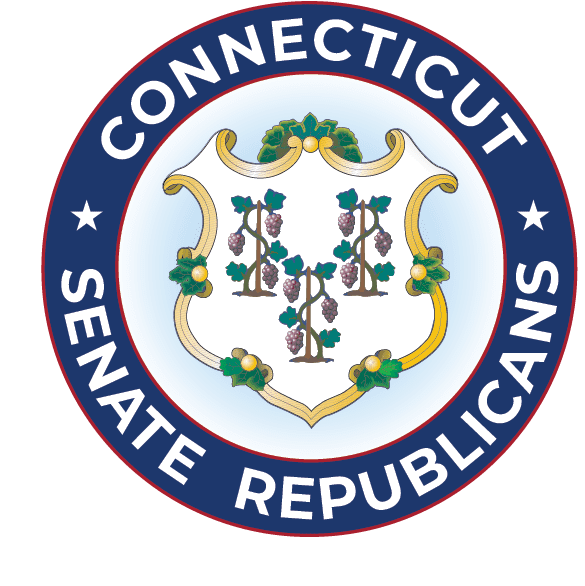Governor Malloy’s Historic and Cynical Use of Executive Orders
March 12, 2014President Obama’s threat to act by executive order is not unique. Indeed in Connecticut we are dealing with our own chief executive abuse of the process. Governor Malloy has used the power of the executive order to coopt and neutralize opponents proposals, cater to factions within his own party, and even usurp his own party’s legislative initiatives all while avoiding legislative oversight and public accountability.
The sheer number of executive orders executed by Governor Malloy in the first three years of his administration is startling:
Malloy – 40
Rell – 16
Rowland – 17
Weicker – 10
O’Neil – 8
However, numbers alone do not tell the story. From his first executive order to his most recent, Governor Malloy has used executive orders to cynically pay lip service to important issues while masking glaring failures in his administration.
Immediately upon taking office, Governor Malloy issued Executive Order (EO) No. 1 which he claimed would fulfill one of his central campaign promises – to bring fiscal stability and integrity to Connecticut’s budget process by implementing Generally Accepted Accounting Principles (GAAP). That year there were many legislative proposals to transition to GAAP, none of which the Governor endorsed.
To transition the state to fiscal accountability under GAAP, the Governor promised to manage and report the state budget in compliance with GAAP standards which includes acknowledging debt load. The Governor also promised to make annual payments on this debt. He decried past policies which “kicked the can down the road” and burdened future generations.
Three years later, not only has the Governor failed to operate his budgets using GAAP, but he has failed to pay one dime towards retiring the GAAP deficit.
Facing criticism for his historic $1 billion tax increase and Connecticut’s continued drop in national rankings for economic competitiveness and job growth, Governor Malloy executed another optimistic sounding executive order.
Executive Order No. 17, issued in January 2012, creating the “Governor’s Business Tax Policy Review Taskforce” comprised of the Governor’s own Commissioners of Revenue Services and Economic and Community Development and hand-picked tax and business experts.
After diligently working for months, the taskforce issued recommendations including:
- the elimination of the corporate tax surcharge, minimum corporate tax, and business entity tax
- the phase down of sales taxes on consumer purchases and phase out of taxes on certain business to business transactions
- adoption of a cap on individual estate tax liability
Significantly, but perhaps not surprisingly, NOT ONE of these recommendations has been implemented. In fact, the Governor’s budgets have included extensions and increases in the very taxes his own taskforce recommended eliminating such as a 20% corporate tax surcharge, a new tax on electric generation, an increase in the sales tax rate and increases of the gas tax, rental car and hotel occupancy taxes. The result: a recent Kiplinger report ranked Connecticut as the second least tax friendly state in the nation.
Fiscal Responsibility and Transparency
A 2011 report from UConn found Connecticut to be one of the most regulated states in the nation. In March 2013, the non-partisan Connecticut Policy Institute issued a report that found “Comparisons of state regulatory environments consistently rank Connecticut as having one of the most burdensome regulatory climates in the nation.”
Unable to ignore the growing criticism, the Governor issued Executive Order No. 37 declaring his commitment “to creating jobs, enhancing opportunities for Connecticut businesses.” He called on all state agencies to analyze their regulations to identify those that may be overly burdensome and/or ineffective and recommend repeal or modification. The review was to apply only to “regulations in effect for more than four years.” None of the more than 400 new regulations imposed by his administration would be reviewed.
In addition to fiscal responsibility, a central campaign theme for candidate Malloy was transparency. As a candidate in 2000, Malloy promised to bring “fundamental change in our approach to government” through a transparent administration. Again, in 2006, he affirmed his commitment to an “open and transparent” government.”
Despite this pledge, one of his first proposals as Governor was to weaken the three independent government watchdog agencies, the Freedom of Information Commission, State Elections Commission and Office of State Ethics, by merging them and putting them under the control of his own political appointee. Even his political allies expressed concern and surprise at this proposal.
We later learned that his top advisors, including his chief of staff, top legal counsel, budget chief and press advisor, used private e-mail accounts to correspond on major policy matters and negotiations. Communicating via private e-mail allowed them to avoid the state’s retention system which maintains e-mails for later public scrutiny.
There is also the case surrounding the Malloy administration and the relationship with state employee labor unions. During his first year in office Malloy permitted certain daycare providers to unionize. Despite a failed attempt to pass legislation in the General Assembly during the 2011 session, Malloy signed Executive Orders #9 and #10 which began the forced unionization process.
The governor’s orders also allow personal care attendants who service poor families, the elderly, and the disabled to collectively bargain. The personal care attendants are paid through the state’s Medicaid program. The two orders were unsuccessfully challenged in state court because legislation was eventually enacted in the 2012 session that ratified and superseded the two orders. That law states that the child care workers and personal care attendants are not state employees, but grants them many of the same collective bargaining rights and obligations given to state employees.
The U.S. Supreme Court is now debating Harris v. Quinn, regarding the forced unionization of home healthcare workers in Illinois. Eight women who provide home care believe that state violated their right to freedom of association by requiring home care workers who serve Medicaid recipients to accept a union as their exclusive representative and pay it fees.
Accountability
The Governor’s historic use of executive orders is troublesome. When Governor’s use their power to purposefully avoid accountability to and oversight by the peoples’ representatives in the legislature, they distort the balance of power between the branches of government.
The general assembly must act to correct this imbalance of power created by Malloy’s aggressive use of executive orders and reassert its legislative authority. The general assembly should consider the following:
- Adopt legislation requiring that, absent a state of emergency, the Governor must give the legislature and the public notice and an opportunity to be heard before adopting an executive order.
- Any executive order requiring action by administrative agencies or adopting new policies should include reporting requirements so the legislature and the public can learn the results of its implementation and evaluate its success.
These reforms would not infringe upon the Governor’s authority to issue executive orders but would ensure a degree of public notice, input and accountability.
35 years ago the Connecticut Bar Journal noted with alarm that there were no standards limiting the scope of executive orders or public process for their adoption nor was there any oversight.
The call to action was ignored and now Connecticut finds itself ruled by a Governor more than willing to exploit his executive powers for political purposes.


